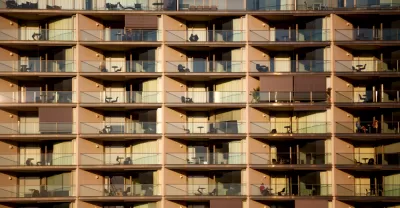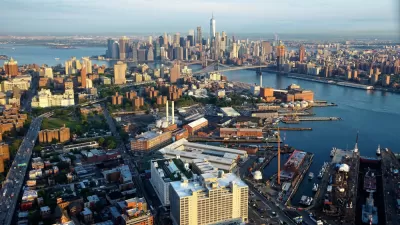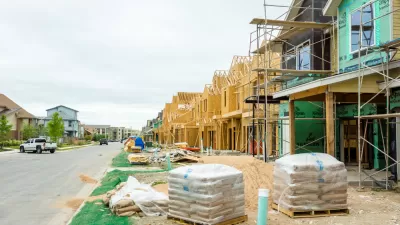Australia's housing market has built steadily at market rates but housing affordability has remained steady. What if building waves of new supply isn't enough to improve affordable housing options for those in need?

An article with a small committee of writers, and published by The Conversation, aims to debunk policy clichés "that keep reemerging" in the face of Australia's affordable housing shortage.
To put it simply, this article is taking aim at supply side approaches to housing policy—i.e., loosening zoning to allow for more building. In Australia, according to this article, supply is booming, but that hasn't helped lower housing costs.
Australia’s new housing supply per capita is actually very strong by international standards. Over the past decade, supply of new units and apartments has been flowing in job-rich metropolitan areas with dense populations, which are also higher-value locations.
According to the cliché, this supply response should have cooled prices. Yet dwelling price inflation has surged even in metropolitan areas where new housing supply has exceeded population growth.
The article also takes aim at the notion of filtering, "whereby older housing moves down to the affordable end of the market over time." The authors claim that the evidence for filtering is thin in the United States. As for in Australia: "in Australia there’s still no evidence to suggest new housing supply has filtered across the housing stock to expand affordable housing opportunities for low-income Australians, or that it will do so any time soon."
The authors also argue that builders would stop building as soon as prices did cool, so "high levels of supply output are rarely sustained." All of these arguments lead to the conclusion that planning reform is inadequate as affordable housing strategy. The only solution, according to the article, is a larger affordable housing sector.
FULL STORY: Affordable housing policy failure still being fuelled by flawed analysis

Alabama: Trump Terminates Settlements for Black Communities Harmed By Raw Sewage
Trump deemed the landmark civil rights agreement “illegal DEI and environmental justice policy.”

Planetizen Federal Action Tracker
A weekly monitor of how Trump’s orders and actions are impacting planners and planning in America.

Why Should We Subsidize Public Transportation?
Many public transit agencies face financial stress due to rising costs, declining fare revenue, and declining subsidies. Transit advocates must provide a strong business case for increasing public transit funding.

Understanding Road Diets
An explainer from Momentum highlights the advantages of reducing vehicle lanes in favor of more bike, transit, and pedestrian infrastructure.

New California Law Regulates Warehouse Pollution
A new law tightens building and emissions regulations for large distribution warehouses to mitigate air pollution and traffic in surrounding communities.

Phoenix Announces Opening Date for Light Rail Extension
The South Central extension will connect South Phoenix to downtown and other major hubs starting on June 7.
Urban Design for Planners 1: Software Tools
This six-course series explores essential urban design concepts using open source software and equips planners with the tools they need to participate fully in the urban design process.
Planning for Universal Design
Learn the tools for implementing Universal Design in planning regulations.
Caltrans
Smith Gee Studio
Institute for Housing and Urban Development Studies (IHS)
City of Grandview
Harvard GSD Executive Education
Toledo-Lucas County Plan Commissions
Salt Lake City
NYU Wagner Graduate School of Public Service





























